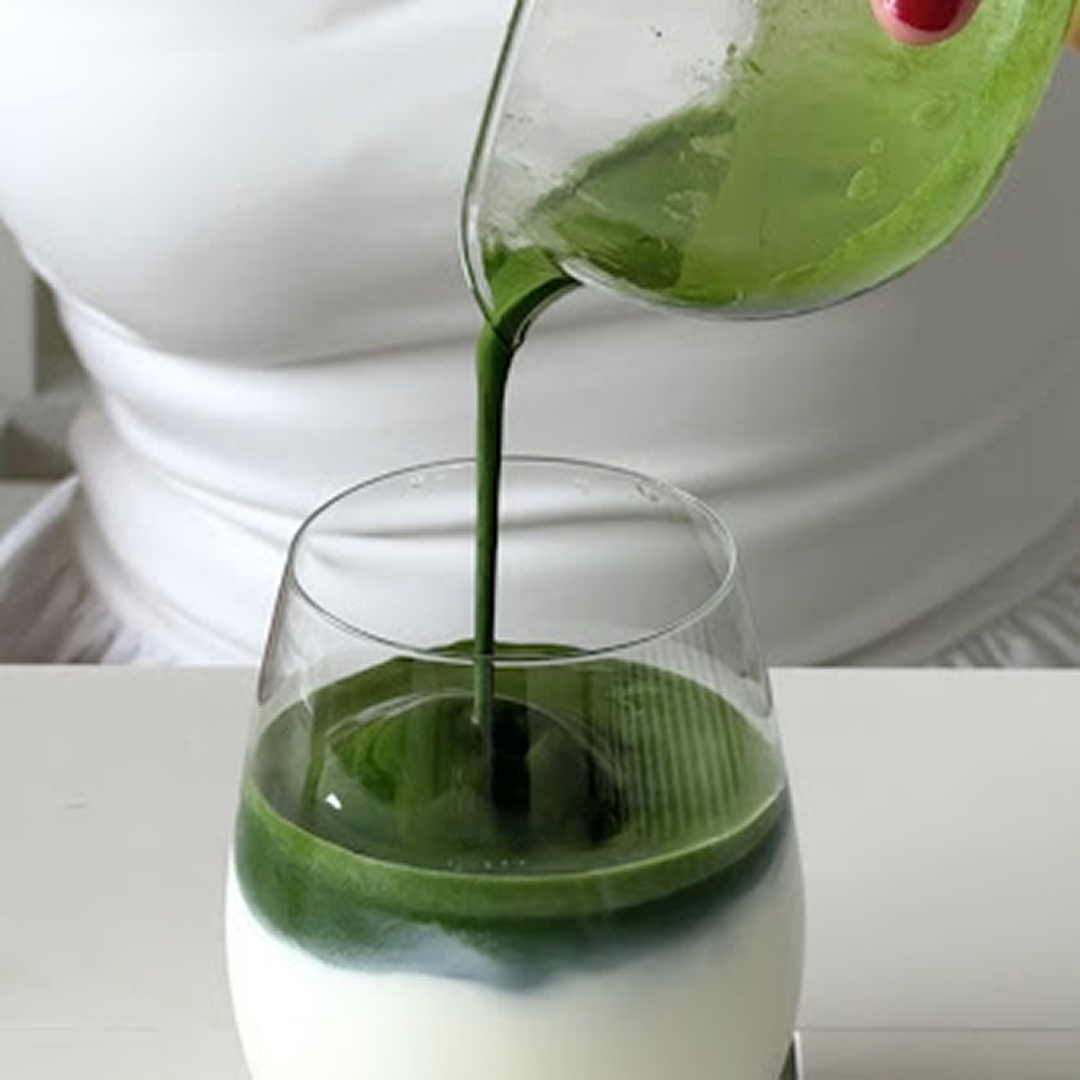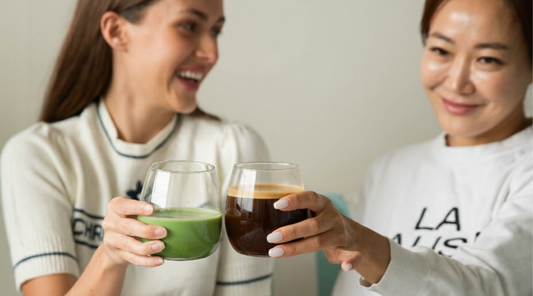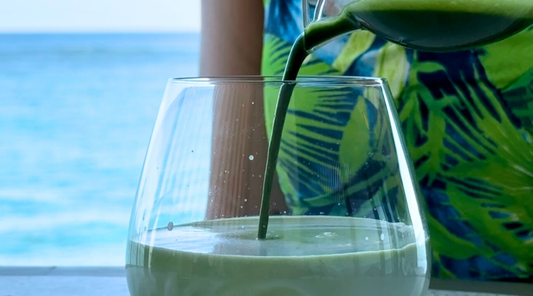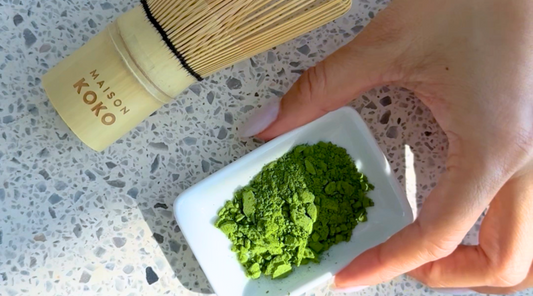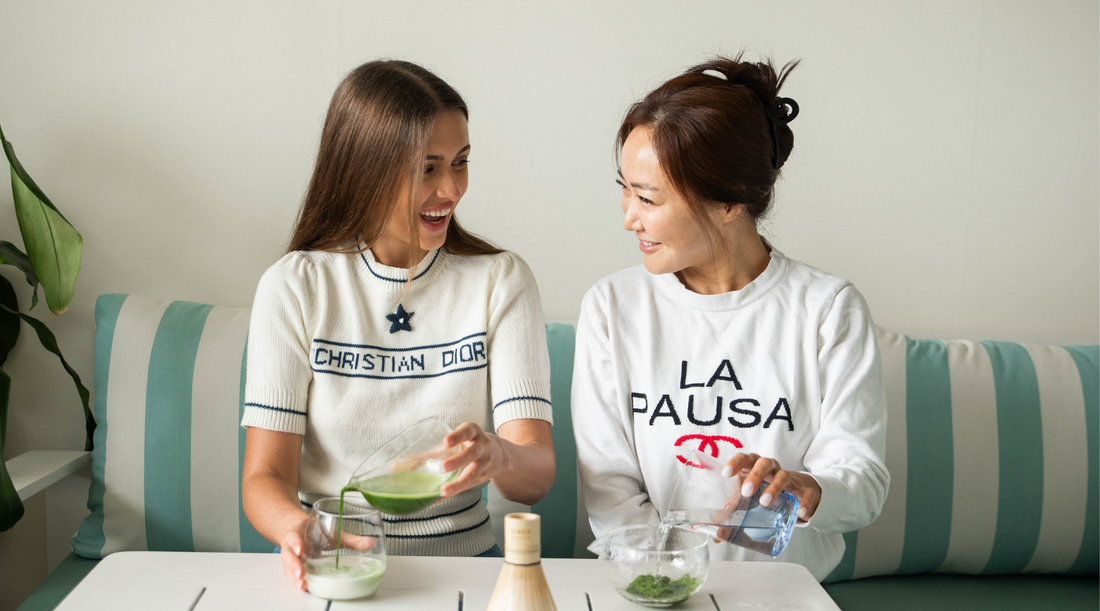
Matcha vs Hojicha: Two Japanese Teas with One Origin
Share
When it comes to Japanese tea, few pairings spark as much curiosity as matcha (抹茶) and hojicha (焙じ茶). Both are deeply rooted in Japanese tea culture and come from the same plant — Camellia sinensis — yet they could not be more different in flavour, aroma, and even how they’re enjoyed.
If you’ve ever wondered how two green teas from the same leaf can create such unique experiences, this guide will take you through everything: origins, processing, taste, health benefits, and how to choose the right one for your lifestyle.
The Origin Story: Same Plant, Different Journeys
The secret to their differences lies in how the leaves are grown and processed.
- Matcha (抹茶): Made from shade-grown tea leaves called tencha (碾茶). The plants are covered for about 3–4 weeks before harvest, which boosts chlorophyll and L-theanine in the leaves. After harvest, they are steamed, dried, and carefully de-stemmed. When this tencha is finely stone-ground (ishi-usu biki), it becomes matcha — the vibrant emerald-green powder known for its rich umami, smooth texture, and gentle natural sweetness.
- Hojicha (焙じ茶): First created in Kyoto in the 1920s, hojicha is defined by its roasting. Green tea leaves — often bancha, sencha, or kukicha — are roasted at moderate to high heat (typically 160–200 °C). This transforms the leaves from green to a warm reddish-brown and develops a nutty, caramel-like aroma. Roasting reduces bitterness and caffeine, giving hojicha its mellow, toasty flavour that feels completely different from matcha.
👉 Curious how shading creates matcha’s unique flavour and calm energy? Explore our guide on Matcha Shading Styles.
Matcha vs Hojicha: A Quick Comparison
| Aspect | Matcha ☘️ | Hojicha 🍂 |
| Colour | Bright, vibrant green | Toasted brown |
| Flavour | Umami-rich, vegetal, slightly sweet | Nutty, roasted, caramel-like |
| Caffeine | Higher (focused energy) | Lower (relaxing, evening-friendly) |
| Preparation | Whisked powder into water or milk | Brewed loose leaves or powder |
| Mood | Energising, meditative | Comforting, calming |
In short, matcha delivers vibrant, focused energy, while hojicha offers a roasted calm perfect for evenings.
Flavour Profiles: Bright vs Toasted
Matcha and hojicha could not be further apart in the cup:
- Matcha: Bold, vegetal, grassy with umami depth, and a gentle natural sweetness. Think fresh spinach or seaweed balanced with creaminess.
- Hojicha: Warm, roasted, nutty, with hints of cocoa or caramel. Think roasted nuts or a light coffee alternative.
Morning vs Night Rituals
- Matcha = a morning ritual for clarity, energy, and focus.
- Hojicha = an evening ritual for unwinding, comfort, and gentle digestion.
This is why many Japanese households keep both: matcha for the day, hojicha for the night.
Health Benefits: Two Paths to Wellness
Both teas are rich in antioxidants and linked to numerous wellness benefits, but their effects differ slightly:
Matcha
- Rich in catechins (EGCG) → metabolism and heart health.
- High in L-theanine → calm focus, reduced stress.
- Balanced with caffeine → sustained energy without jitters.
- Research confirms that shading boosts L-theanine in matcha, which works in harmony with caffeine to support calm focus.
Hojicha
- Lower caffeine → easy on the stomach, safe for evenings.
- Roasting softens bitterness → gentle on digestion.
- Still contains polyphenols → antioxidant support without overstimulation.
💡 Tip: Alternating between the two gives you the best of both worlds: matcha for productivity, hojicha for relaxation.
Want a detailed breakdown of tea caffeine levels compared to coffee? Check out our blog on Matcha vs Coffee Caffeine.
Which Is Healthier: Matcha or Hojicha?
Neither tea is “better” in every way; it depends on your needs. Matcha is richer in antioxidants and provides a focused, energising boost, while hojicha is gentler on the stomach and better suited for evenings. Many tea drinkers enjoy both, choosing matcha for daytime performance and hojicha for night-time balance.
Calories in Matcha vs Hojicha
On their own, both matcha and hojicha are extremely low-calorie drinks, usually just 2–5 calories per serving when prepared with water. The calories only increase when you add milk, sugar, or syrups. If you’d like a deeper dive, see our guide on matcha calories.

Cultural Significance
Matcha
For centuries, matcha has been central to the Japanese tea ceremony (chanoyu 茶の湯). Prepared with care using bamboo whisks (chasen), it embodies mindfulness, hospitality, and Zen philosophy. Even today, matcha symbolises elegance, ritual, and connection. The Urasenke Foundation in Kyoto continues to preserve and share this heritage worldwide.
Hojicha
A more modern invention, hojicha became popular in Kyoto in the early 20th century as a way to use leftover leaves and stems. Roasting gave it new life, and it quickly became the comfort tea of everyday Japan. Today, hojicha is found everywhere from family dining tables to Kyoto cafés, and even in desserts like hojicha ice cream and lattes. For a broader perspective on tea traditions, see Japan-Guide’s overview of Kyoto tea ceremony.
Together, they represent two sides of Japanese tea culture: the formal and ceremonial, and the casual and comforting.
How to Choose Between Matcha and Hojicha
Think of your daily rhythm:
Choose matcha if...
- You need morning clarity, study focus, or sustained energy.
- You enjoy bold, grassy, umami-rich flavours.
- You want to take part in a centuries-old ritual.
Choose hojicha if…
- You want a cosy, low-caffeine drink in the evening.
- You prefer nutty, roasted flavours.
- You’re new to Japanese teas and want something mild and approachable.
📌 Pro tip: Many tea lovers keep both on hand: matcha for energy, hojicha for winding down.
FAQs About Matcha vs Hojicha
1. Can I drink matcha and hojicha in the same day?
Absolutely! Many enjoy matcha in the morning for focus and hojicha at night for relaxation.
2. Which is better for beginners?
Hojicha is milder and easier to approach, while matcha is more complex. Many start with hojicha and grow into ceremonial-grade matcha.
3. Can children or pregnant women drink hojicha?
Yes, hojicha is very low in caffeine, making it safe for children and pregnancy (in moderation).
4. Does roasting make hojicha less healthy?
Some antioxidants reduce during roasting, but hojicha still contains polyphenols and remains beneficial, especially for digestion.
5. Can I cook with them?
Yes! Matcha is famous for lattes, desserts, and baking, while hojicha adds a nutty, roasted twist to cookies, cakes, and even ice cream.
6. How do regional differences affect flavour?
Just as wine regions influence taste, so do tea regions. Uji hojicha has a rich, caramel-like roast, while Nishio hojicha is lighter. For matcha, Uji and Yame remain benchmarks of quality.
Want to explore how terroir shapes flavour? See our feature on Yame vs Uji Matcha.
7. Is tencha the same as matcha?
Not exactly. Tencha (碾茶) refers to shaded tea leaves that have been steamed, dried, and de-stemmed. Only when tencha is finely stone-ground (ishi-usu biki) does it become matcha. So while all matcha starts as tencha, not all tencha becomes matcha.
8. Is matcha always stone-ground?
Authentic ceremonial matcha is always stone-milled. The slow grinding keeps the leaves cool and preserves delicate flavours and nutrients. Some lower-grade or culinary matcha may be machine-milled, but traditional stone milling is the benchmark for quality.
9. Is hojicha always roasted?
Yes, roasting is what defines hojicha. Without roasting, it’s simply green tea. The roasting process transforms the leaves, giving them a reddish-brown colour and a nutty, caramel-like flavour.
10. Does roasting reduce caffeine in hojicha?
Yes. Roasting lowers the caffeine content compared to unroasted green teas. That’s why hojicha is gentle enough to drink in the evening or even suitable for children in moderation.
11. Can hojicha be made from any green tea?
Typically, hojicha is made from bancha (later harvest leaves), sencha, or kukicha (stems). Each base tea brings subtle differences to the roasted flavour.
Final Thoughts
Matcha and hojicha are not rivals; hey are complements. One offers bright, grassy clarity, the other a soothing, roasted calm. Together, they create a full-day ritual: matcha to start with energy and focus, hojicha to end with warmth and peace.
At Maison Koko, we celebrate both sides of Japanese tea. Whether you’re whisking a vibrant bowl of Premium Ceremonial Matcha or winding down with a cup of Hojicha Powder, you’re experiencing centuries of tradition in every sip.
